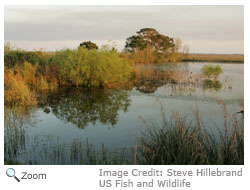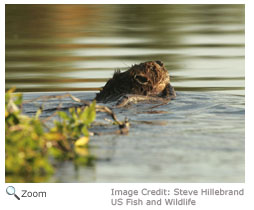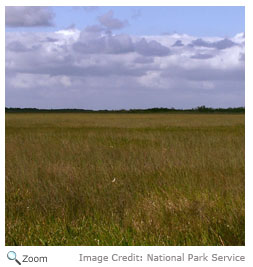Full of Life  Freshwater marshes are often found in open areas near rivers and lakes. They are very common at the mouths of rivers and form in areas with mineral soil that drains very slowly. The water in freshwater marshes is usually one to six feet deep and is rich in minerals. Water flows into marshes from rain or from a water source like creeks, streams, or rivers. Freshwater marshes are often found in open areas near rivers and lakes. They are very common at the mouths of rivers and form in areas with mineral soil that drains very slowly. The water in freshwater marshes is usually one to six feet deep and is rich in minerals. Water flows into marshes from rain or from a water source like creeks, streams, or rivers.
 Low-growing plants like grasses and sedges are common in freshwater marshes. Bulrushes and cattails are often found at the edges of a marsh. There are very few trees in freshwater marshes. Animals like mink, raccoons, opossums, muskrats, beavers, frogs, turtles, and lots of species of birds and insects are common in marsh lands. Freshwater marshes can vary in size from very small to very large! The largest freshwater marsh in the United States is the Florida Everglades. Low-growing plants like grasses and sedges are common in freshwater marshes. Bulrushes and cattails are often found at the edges of a marsh. There are very few trees in freshwater marshes. Animals like mink, raccoons, opossums, muskrats, beavers, frogs, turtles, and lots of species of birds and insects are common in marsh lands. Freshwater marshes can vary in size from very small to very large! The largest freshwater marsh in the United States is the Florida Everglades.
| |
River of Grass  The Florida Everglades is a saw-grass marsh. Saw-grass is a very thick grass with a sharp, saw-like edge. It grows 10-15 feet high. The basin of the Everglades is made of limestone. The limestone makes it hard for water to drain. The Everglades begin at Lake Okeechobee. When the lake overflows, water drains into the Everglades. The Everglades has a dry and a wet season. The dry season runs from December to April. During the dry season, animals that live in the water often migrate to deeper pools of water. Other species that prey on these animals will also move near the pools of water. In the wet season, which runs from May to November, rain fills in the dry areas and wildlife can be found throughout the Everglades. The water level in the Everglades can vary from just a few inches to six feet. The Florida Everglades is a saw-grass marsh. Saw-grass is a very thick grass with a sharp, saw-like edge. It grows 10-15 feet high. The basin of the Everglades is made of limestone. The limestone makes it hard for water to drain. The Everglades begin at Lake Okeechobee. When the lake overflows, water drains into the Everglades. The Everglades has a dry and a wet season. The dry season runs from December to April. During the dry season, animals that live in the water often migrate to deeper pools of water. Other species that prey on these animals will also move near the pools of water. In the wet season, which runs from May to November, rain fills in the dry areas and wildlife can be found throughout the Everglades. The water level in the Everglades can vary from just a few inches to six feet.
|